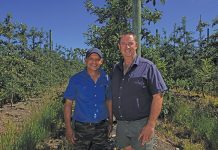Early blight (Alternaria solani) is one of the most well-known tomato diseases and one of the easiest to identify. It produces concentric spots of about 10mm on leaves and stems, which is why it’s also called target spot. When it occurs on stems, the rings become elongated.
This is a disease that usually occurs on outdoor plants, as free water is required for the fungus spores to take root. These spores are wind-blown and can originate from other crops like potatoes or weeds.Early blight can also survive on crop debris for a year or longer. Although the disease can be seed-borne, this is unlikely in modern times. It was more of a problem when cheap, open-pollinated varieties were grown. If the disease comes with the seeds, it will affect the seedlings by causing damping off or lesions on the stems, causing the seedlings to die.
The fungal spores take from half an hour to a couple of hours to germinate, depending on the temperature, and need a further three to 12 hours of moisture to penetrate the leaves. The ideal temperature for development is 25ºC to 29ºC, which is warmer than the temperature needed to cause late blight. Warm rainy weather and high humidity are ideal. Hot, dry weather can cause the disease to take a break, but one should not become lax as it’s tenacious and we need to get on top of it as soon as possible.
The disease starts at the base of the plant and works its way upwards, which gives us an opportunity to take control measures before too much damage is done.Plants become more prone to the disease when under stress and when undernourished. They also become more vulnerable in the later stages of development when they have the stress of having a crop to support, waning vigour and many older leaves.
When leaves become infected, the crop losses are likely to be proportionate to the damage which has occurred, but there’s also the danger of the fruit becoming infected and causing further losses.
Most farmers anticipate the disease and adopt a weekly or 10-day spray programme with dithiocarbamates alternated with copper sprays. This usually suppresses the disease, but should it get out of hand because of favourable conditions, systemic products can be used. However, they should never be abused or this will cause resistance to build up. – Bill Kerr
Contact Bill Kerr on (016) 366 0616 or e-mail [email protected]. |fw








